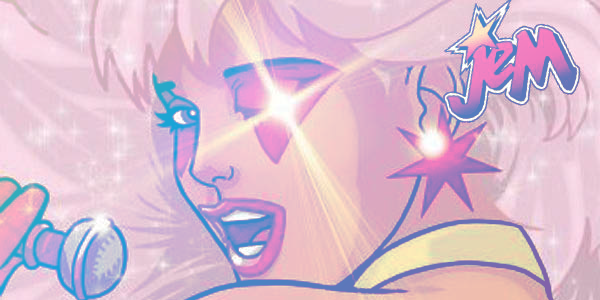Growing up, I had two Jem dolls.
Admittedly, I’m not sure if this was because each Jem had a different appeal, or because my parents didn’t pay much attention to my toy activity, but I clearly liked Jem. The Jem dolls came equipped with a blue and white striped shirt, a matching beret and most importantly, one star-shaped earring that transported “everygirl” Jerrica Benton into Jem, teen rock sensation.
Now, if you have no idea what I’m talking about, I’ll assume Google Analytics will tell me you bounced in 20 seconds. That’s okay, I did just overtly advise others not to market to millennials.
If I’ve still got you, welcome to a safe place. It’s only fair to disclose that I am what some might consider an old, or on the cusp, millennial, born in the early 80s. But I can promise you over the course of this post I will not reference One Direction or Snapchat. And I definitely won’t say “on fleek”…or will I?
Nostalgia, formally defined as a sentimental longing or wistful affection for the past, is a powerful marketing tactic. Marketing is about evoking emotion or need in people to quicken the path to purchase. There is great comfort found in things we know—hence why personalized marketing has taken off in the current landscape.
I understand why we, as marketers, always want to make marketing to millennials work. Millennials are the future purchase decision makers for their households. Toothpaste brands may live and die by converting millennials. On the B2B front, millennials are typically the ones to embrace technology and change.
Millennials don’t have an abundance of life context, so decisions such as toothpaste selection may be easy to make because they aren’t giving up a lifetime of loyalty. The same logic can and should be applied to entertainment—they have no loyalty to shows or media of yesteryear.
When I tell a friend my age I’m writing a blog post about Jem, she squeals and asks if I’m mentioning Synergy, Jem’s holographic computer. When I tell a millennial coworker, she says “Who?”
Why isn’t Jem, who many “old” millennials have great nostalgia for, being marketed to us?!
I sourced the People Pattern platform to either prove or disprove my theory about the make-up of the Jem audience, and my observations were spot-on—most of the Jem audience is “old” millennials, aka my peers. We even threw in a nostalgic hashtag!


I have to think that part of the appeal of Jem would be lost on millennials. How can things like interacting with a hologram computer possibly have the same futuristic excitement they once did? Do millennials remember—or have nostalgia for– the AOL dial-up days? Part of the beauty of watching old school Jem–now–would certainly be the reminder of a simpler time, albeit with complicated hairdos.
Jem certainly isn’t the only victim here–“Boy Meets Girl,” the “Boy Meets World” spinoff, wasn’t marketed towards me or my peers when it launched. I’m here to say we don’t care about Cory and Topanga’s kid, we want to know about the time Cory took out his first mortgage or became a school teacher who peddled drugs (oh, that story’s already taken?). We’ll see how slated shows like “Fuller House” attack the issue at hand—whether they target marketing toward their existing fan base, or try to attract a new one—millennials–with nostalgic marketing.
Admittedly, this argument goes beyond marketing and into production, casting, writing, etc. But still, it seems silly to waste marketing dollars on millennials, when those same dollars could be directed toward the loyal, nostalgic prospect. Play me “Truly, Truly, Truly Outrageous” in a trailer and I will go see the Jem movie any day.
Because Jem is on fleek, obviously.
Request a demo of the People Pattern platform to see how I collected the data analyzed.



Recent Comments